Pen That is Easy to Write With for Note Cards
Posts filed under Index Card
Hamelin Flash 2.0 Index Cards Review
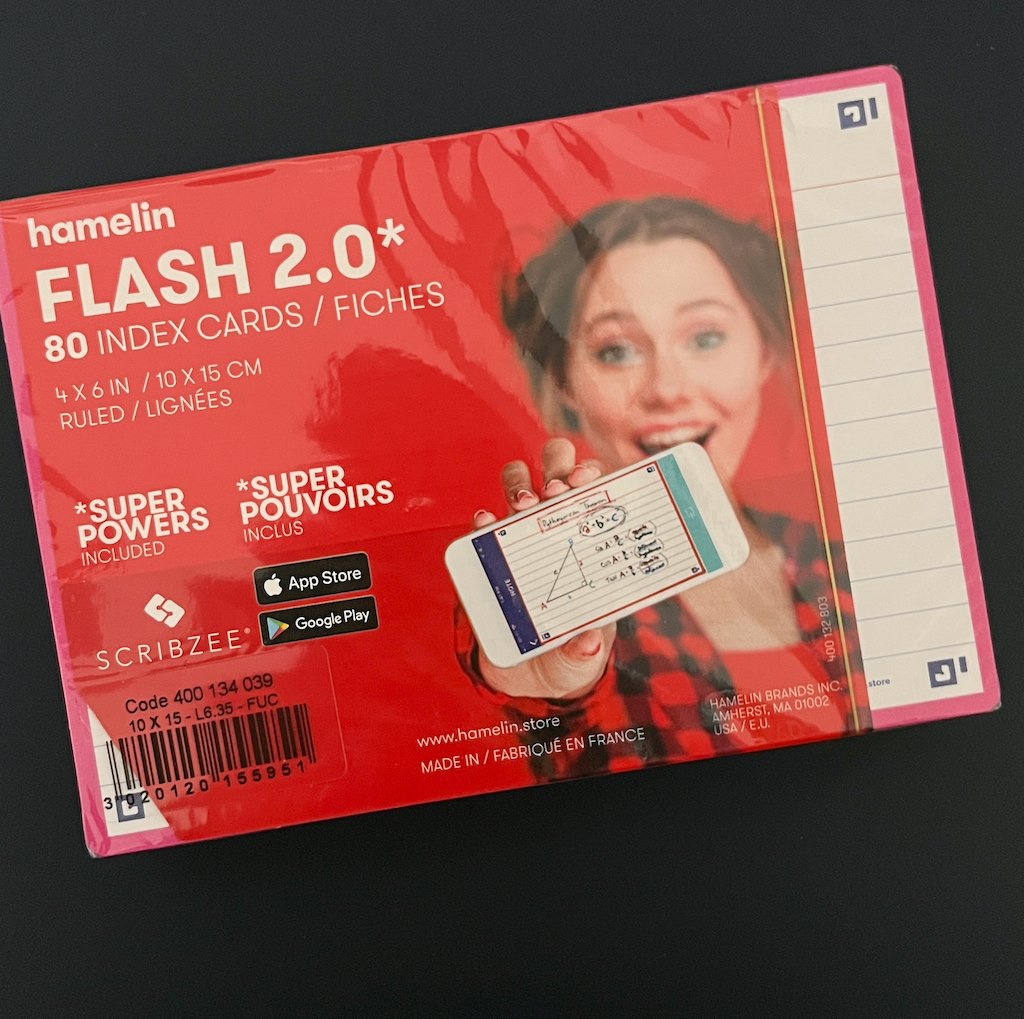
(Kimberly (she/her) took the express train down the fountain pen/stationery rabbit hole and doesn't want to be rescued. She can be found on Instagram @allthehobbies because there really are many, many hobbies!.)
Back in August of last year, I won a pack of flash cards in an Instagram giveaway from Hamelin, a French paper company. I was familiar with Hamelin as I have been a fan of their OPTIK PAPER TM in both their Black n Red notebooks for letter-writing (I only wish it came in dot grid and not only lined), as well as Oxford Paper (the one with the 2 lions in their logo), but I don't really use index cards very much so I wasn't aware that they even had them.
My prize was a pack of Flash 2.0 Index Cards - 80 - 4 x 6"/10 x 15 cm, lined and in Fuchsia. They are available in 12 colors and 2 sizes (the other size being 3 x 5"/7.5 x 12.5 cm). You can find them on Amazon and Walmart for $8-10/pack depending on size and color. They are also available from Hamelin's online store, where they also have a buy 3 get 1 free bundle for $21. Other than that, I didn't know of any of the usual fountain pen/stationery stores that carry them.
There is no information on the pack or on their website about the paper, other than it is "heavyweight card stock". Going purely by feel, the Hamelin felt a wee bit thicker than the Exacompta index cards that I reviewed a few months ago and busting out the scale proves it: the Hamelin weighs in at 0.13 ounces/3.78 grams, while the Exacompta 4x6 card weighs in at 0.11/3.12 grams. But yeah, this is barely anything worth noting, unless you're carrying hundreds of them, in which case that may add up. They feel like what an index card should feel like, not too smooth, scratchy, nor too thick or thin.
The index cards have a nice colored border around all edges and on both sides. The colored edges make it easy to sort based on topics etc, while still having a white background to write/draw on. One side is lined and the other is blank. On the corners of the cards are little markers which their Scribzee app (available on the App Store and Google Play) uses to align and capture index cards. (As an aside, the asterisk in the Flash 2.0 name refers to "Super Powers Included", which I think is a silly marketing way of saying that you get both the analog and digital flashcards experience.) The corners are also rounded which I think is a nice touch. The lined side has the colored border (less than 1/8 " / 3 mm), then 9/16"/15 mm gap, followed by lines that have ¼"/7mm spacing.

The index cards are lined on one side and blank on the other, with its signature.
I picked out some of the wetter and broader inks/pens from my currently inked pens as well as some flex pens too. For the most part, the cards performed really well with a variety of pens and inks. The one major exception was from the Waterman 52, which is a vintage flex pen and lays down a lot of ink. There was some bleed through to the other side, but otherwise there was zero ghosting or bleedthrough from any of the other pens.
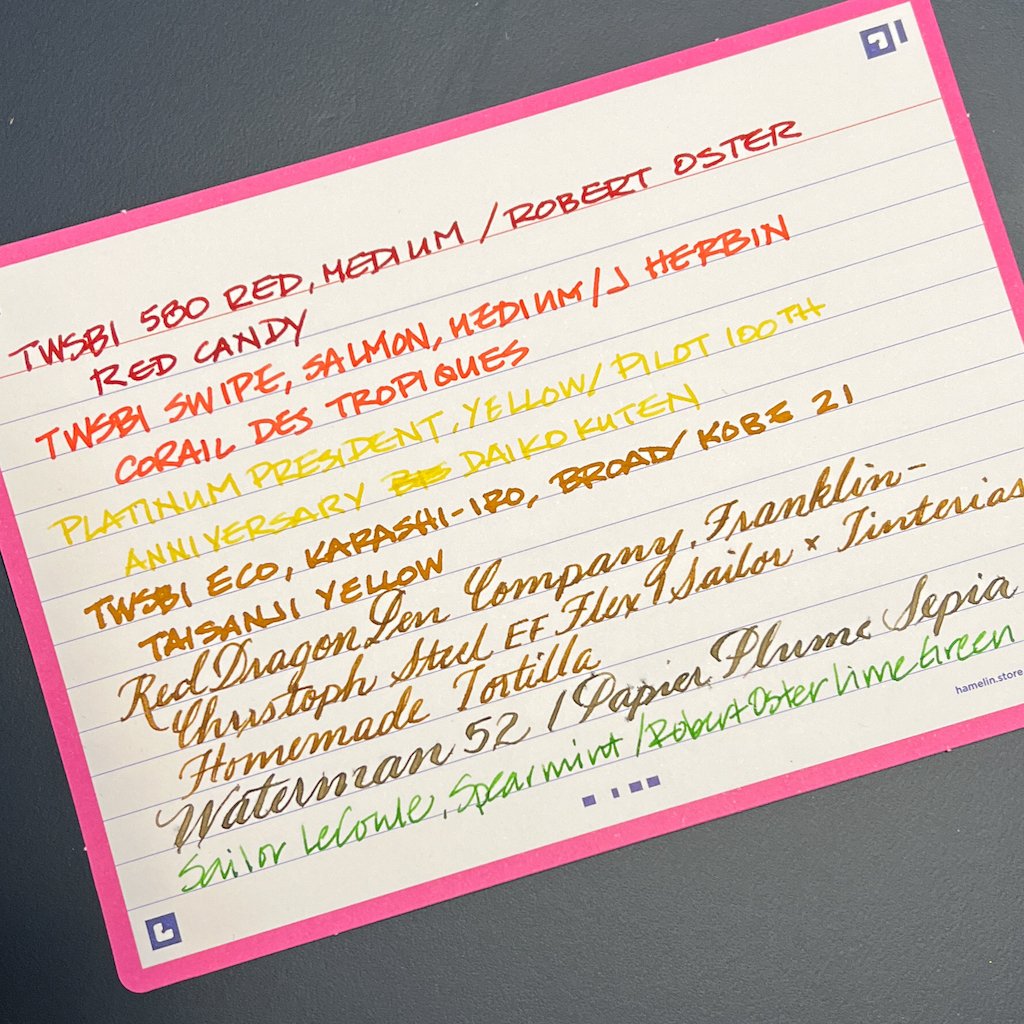
Overall, fountain pens of varying nib sizes and ink wetness worked great.
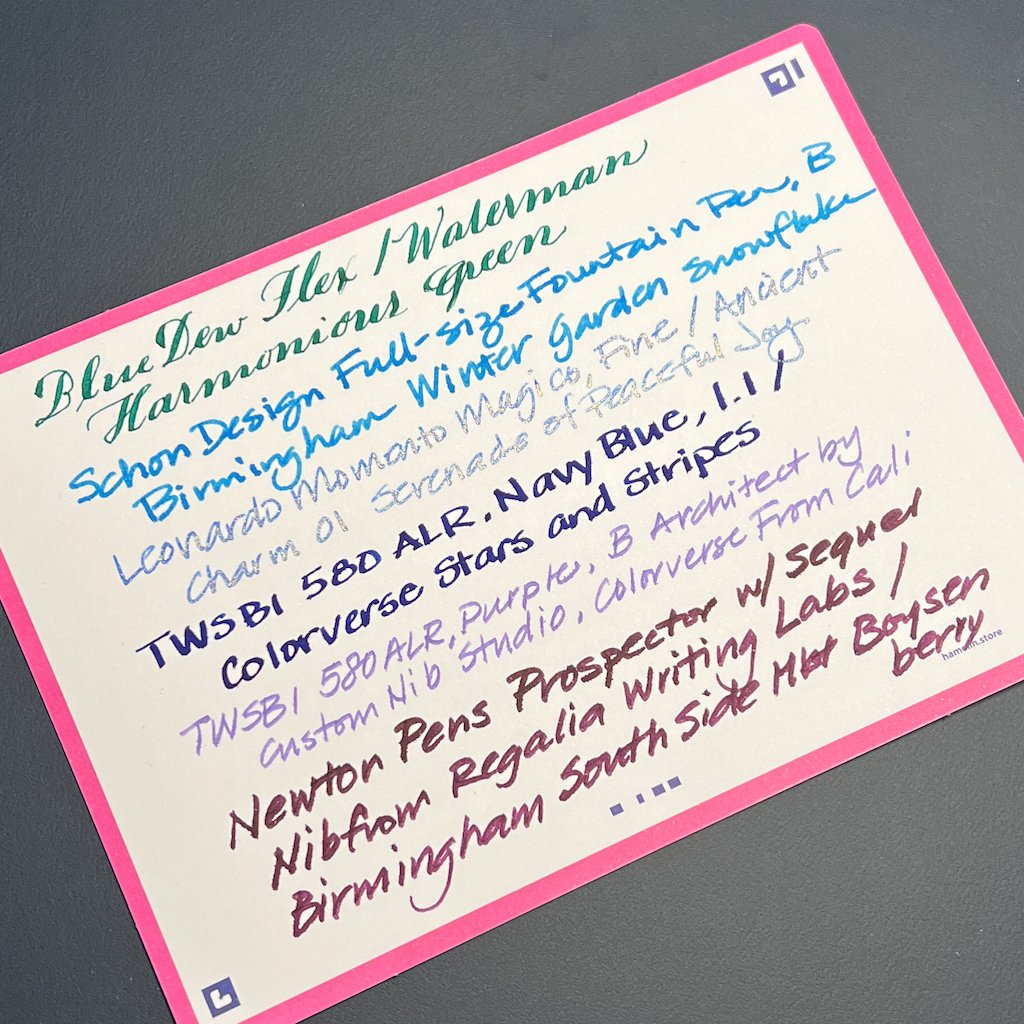


Shimmer is unaffected by the card.

A little bit of feathering on the broadest of nibs.
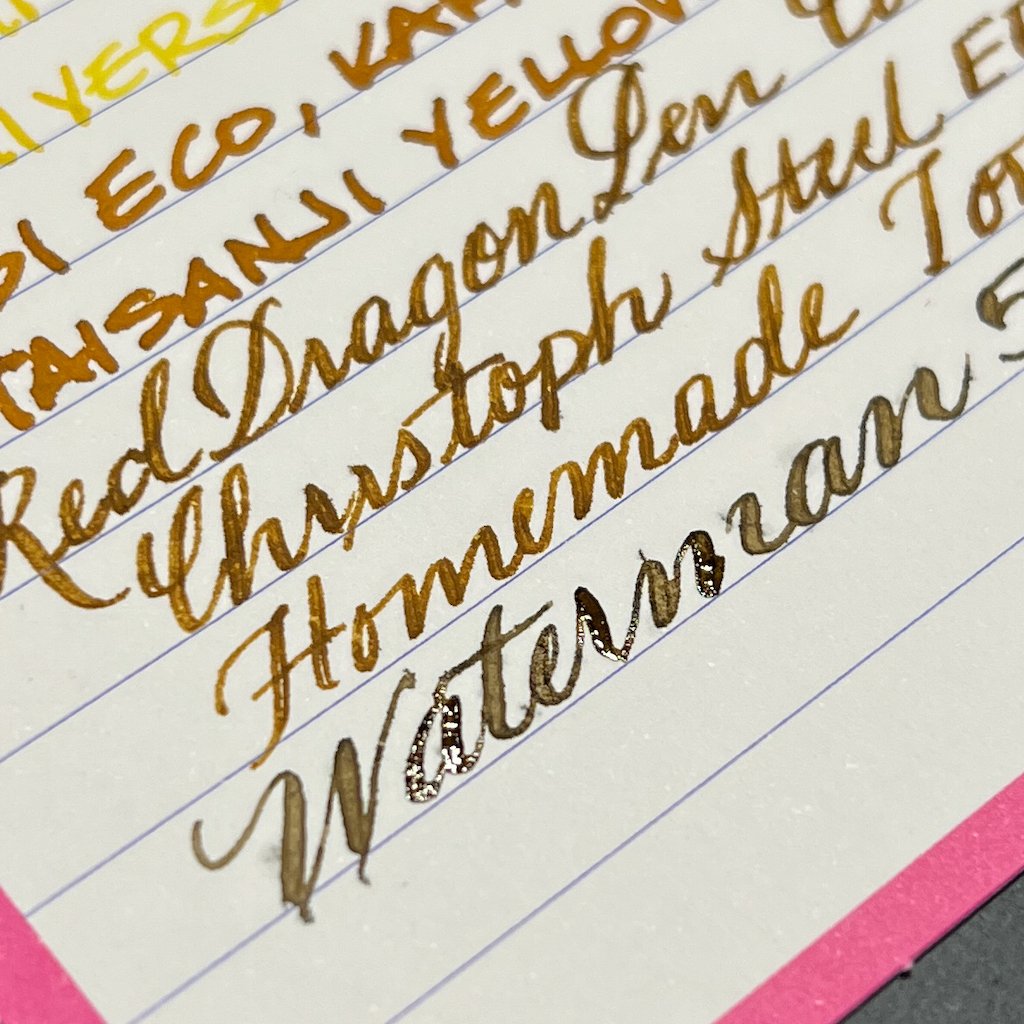
You can see some feathering from the Waterman, but considering how the ink was pooling up, I'm not surprised.

No ghosting and no bleedthrough on either of the cards except for a wee bit from the Waterman flex. If the ink was wetter, it probably would've been more visible.

I used the same non-FPs as I did last time and as expected, they worked just fine with all of them.
I wasn't sure how the Scribzee app worked, so I used a variety of handwriting styles to get varying amounts of ink to lay down and also to see if I could trip up any handwriting recognition. Spoiler alert, there is none in the app - it just takes pictures of your index card and gives you options to sort them in folders. I didn't spend a lot of time with the app but it felt a little kludgey to use, but I also don't use index card apps either, so maybe it's just me and not the app.

Like with the Exacompta index cards, the Hameline Flash 2.0 cards doesn't necessarily show off the ink colors as well as typical fountain-pen friendly paper like Tomoe River. If you're hoping to see chromashader/multishading properties or sheen, you're not really going to see much. Shimmer inks do work just fine though. Except for some of the inks in the flex pens, most of the inks didn't really shade much.
Pros:
- Somewhat easier to find in the US at a decent price than Exacompta cards
- Comes in two sizes
- Blank and lined on the same card
- Colored edges are fun and make sorting easy (and yes, white is available too)
- Generally works well with fountain pens and other writing implements
Neutral
- Scribzee app is available to digitize your index cards but many flash card apps already exist.
Cons:
- Some feathering with wetter nibs, broader nibs and wetter inks.
- Fun ink properties not really visible
- No grid/graph option
- Price - Yes, I said it's a decent price above, but if you're using them for study, $8-10 for 80 cards is still a lot to spend, especially since you're likely to be using hundreds of them.
Overall, I think these were really good as long as I don't go crazy with flex or really broad nibs. I probably won't use them as index cards, but I think they'd make a great note card or recipe card.
(Disclaimer: I did not purchase these index cards. I won them in a giveaway and I was not asked to review them in exchange for winning them. I was not compensated by anyone or any company for inclusion of any of these products or links in this article.)
Exacompta Record Cards - "You say "Record", I say "Index"
(Kimberly (she/her) took the express train down the fountain pen/stationery rabbit hole and doesn't want to be rescued. She can be found on Instagram @allthehobbies because there really are many, many hobbies!.)
With the recent wind-down of Nock.co (sniff sniff), I know that folks have been scrambling to find another source for index cards (as well as other pen storage options). And while there may be other pen storage options out there, there aren't many fountain-pen friendly index cards. It just so happens that a friend of mine wanted to join my Cult Pens order recently and wanted to get index cards by Exacompta because they aren't easy to find here. I told him my "fee" for piggybacking on my order would be a few index cards from the two packs he ordered and here we are.
Exacompta is one of the brands owned by the parent company, Exacompta Clairefontaine, which also owns G. Lalo, J. Herbin, Rhodia and Clairefontaine and others. While many US online vendors carry the other brands, not as many carry Exacompta-branded products or they aren't very cost-effective, which was why my friend wanted me to order index cards from Cult Pens. For example, a pack of 100 - 3x5" (or 75x125 mm) white, blank index cards costs $23.20 from Amazon US, while JetPens had a much better price of $9.75 but it's hard to beat CultPens-record-cards-pack-of-100), which sells them for $3.36.
Exacompta does make these index cards or what they call "record cards" in other sizes including 4x6 (100x150mm), A4, A5, and other similarly sized cards with holes punched out. This review only covers the white 3x5" lined and squared/graph cards and the assorted colors of 4x6" squared/graph cards (which I don't have packaging pictures for). I will also be using the term "index cards" instead of "record cards", as that's the term I've heard the most; ditto for "graph" instead of "squared"..
Each pack of index cards comes shrink wrapped in a protective sleeve of thicker cardstock. There is a cutout to indicate whether they are blank, lined or squared/graph. I appreciate the multiple translations for the product name and type so there's no mistaking which one you're getting. On the back, there is a table of product numbers for the other index card products/colors.

White 3x5" (75x125mm) Exacompta Record/Index cards in lined and graph.

I liked the cutouts on the top and bottom of the packs so you know how many cards are left.
The cards are made from Clairefontaine 205g paper and are printed on both sides. The lined cards have a set of blue and pink lines near the top, then a 8.5 mm gap, followed by lines that have 6mm spacing. The graph has 5mm grid lines on both sides. It is difficult to describe the tactile sensation of index cards, other than they feel like an index card should and is neither too thick nor too thin.

I don't know why there is a gap between the top two lines and the rest of the card because that's not typically seen with other index cards.

Yup, that's graph index cards alright.

4x6" (100x150mm) index cards - there are 25 cards each in blue, yellow, green, and pink.
I decided to go through my currently inked pens and write on the colorful 4x6" cards first. As you can see, the cards performed really well with a variety of pens and inks (yes, I really do have 48 pens inked up right now).
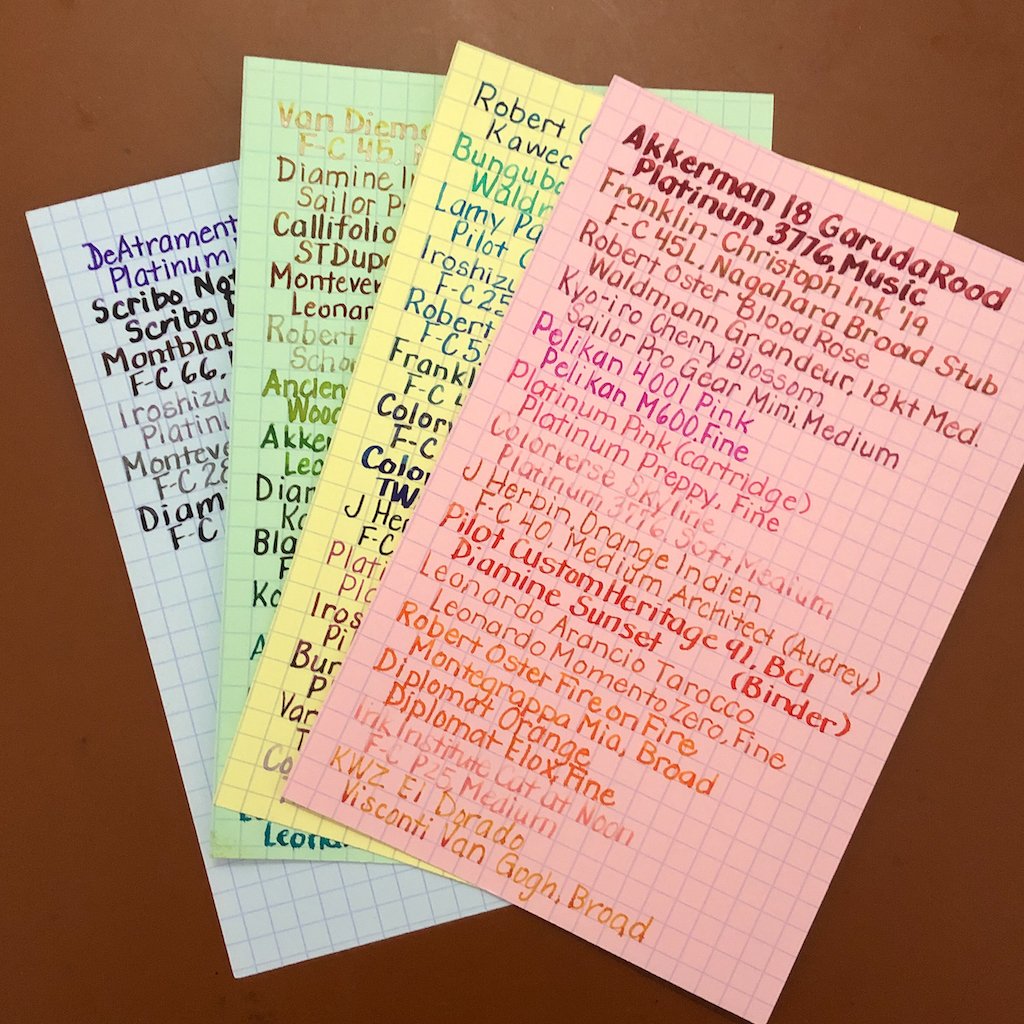
The different colored cards worked equally well with the different pens and inks.

There was some bleeding from Pelikan 4001 Pink.

Handled shimmer just fine as well as a wet 1.1 stub.

More shimmer! But also nice shading from the other inks too.

The Scribo Notturno Viola is the absolute wettest ink from the wettest pen of the bunch.

This is literally as much ghosting or bleedthrough as I could get and this was from the wettest writing sample. No point showing you the backs of the other cards because there was nothing to see.
Now that I could see how the colored cards performed against the wettest inks as well as some shimmer and problematic inks, I picked a few to write on the white 3x5" cards. I deliberately printed slowly on the colored cards and the white lined card but did a fast print on the white graph card. I couldn't resist flexing one of the pens with some cursive just for fun.
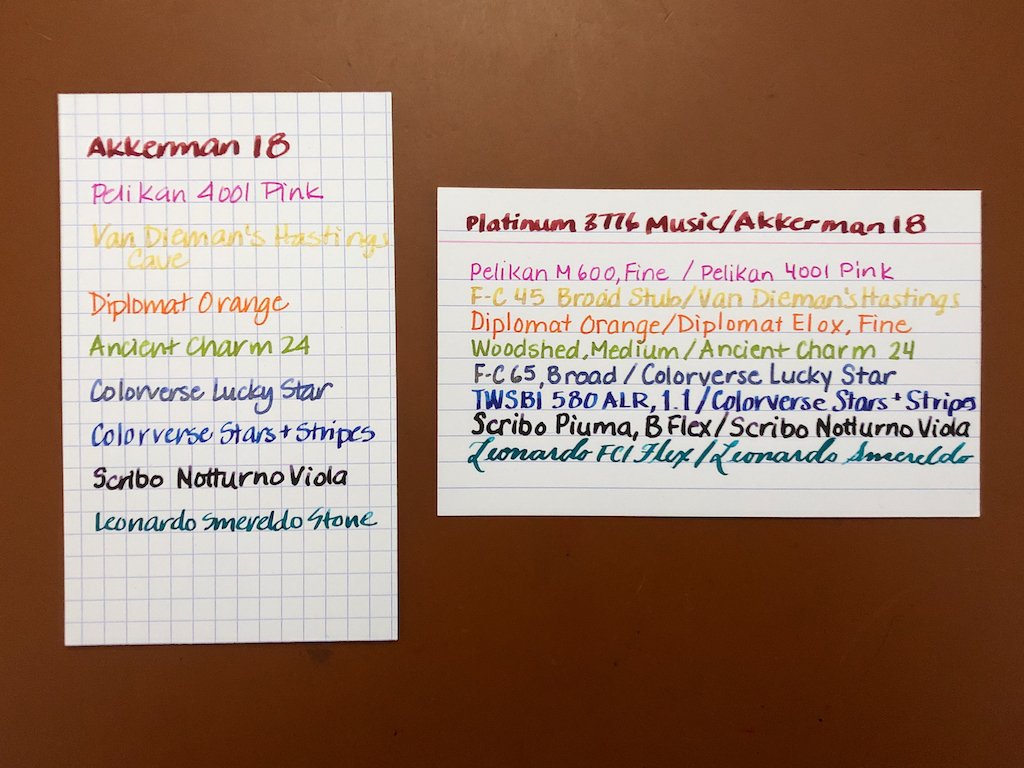
The pens/inks behaved just as well on the white cards as the colored cards, even the flexified Leonardo didn't cause any issues.
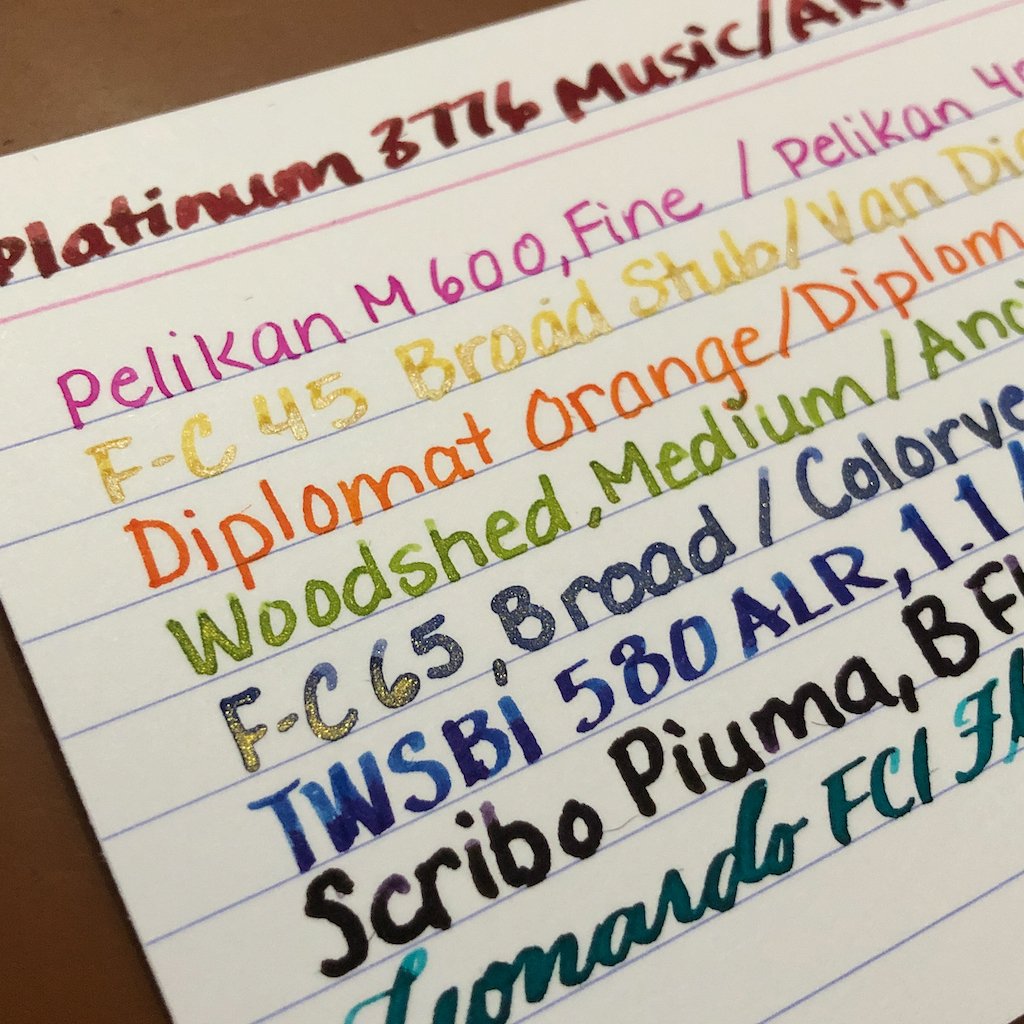
Looks good up close.
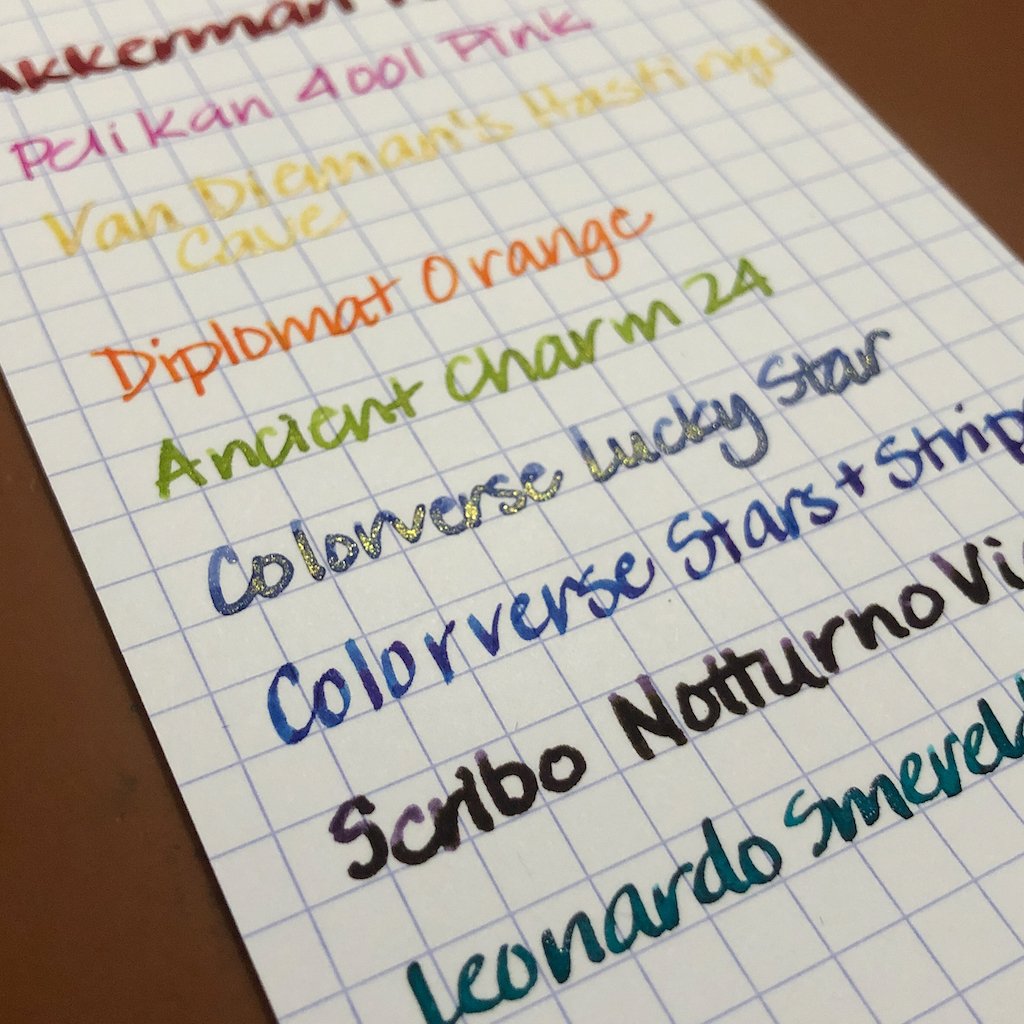
Faster writing and still no problems.
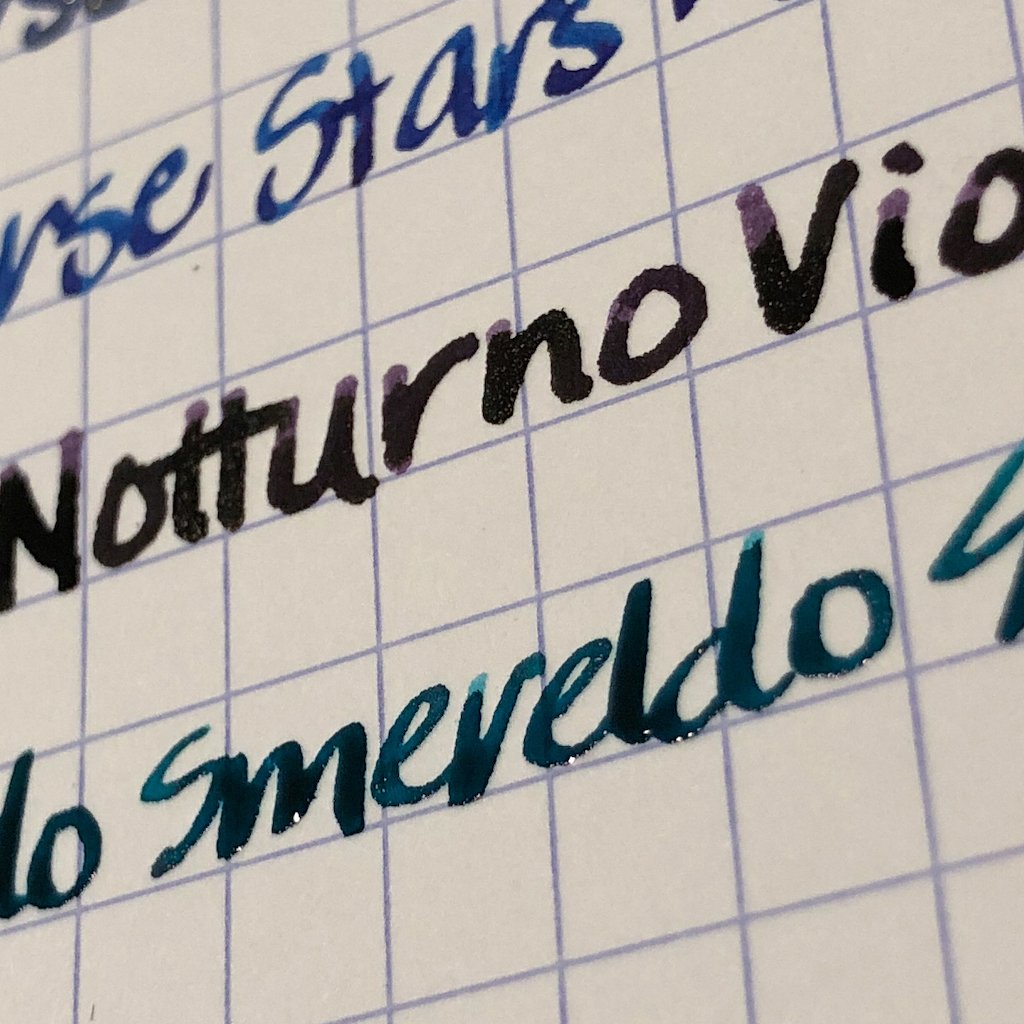
Look at the pooling of the Leonardo Smereldo Stone ink. The Scribo ink was similarly wet and neither ink caused any issues.
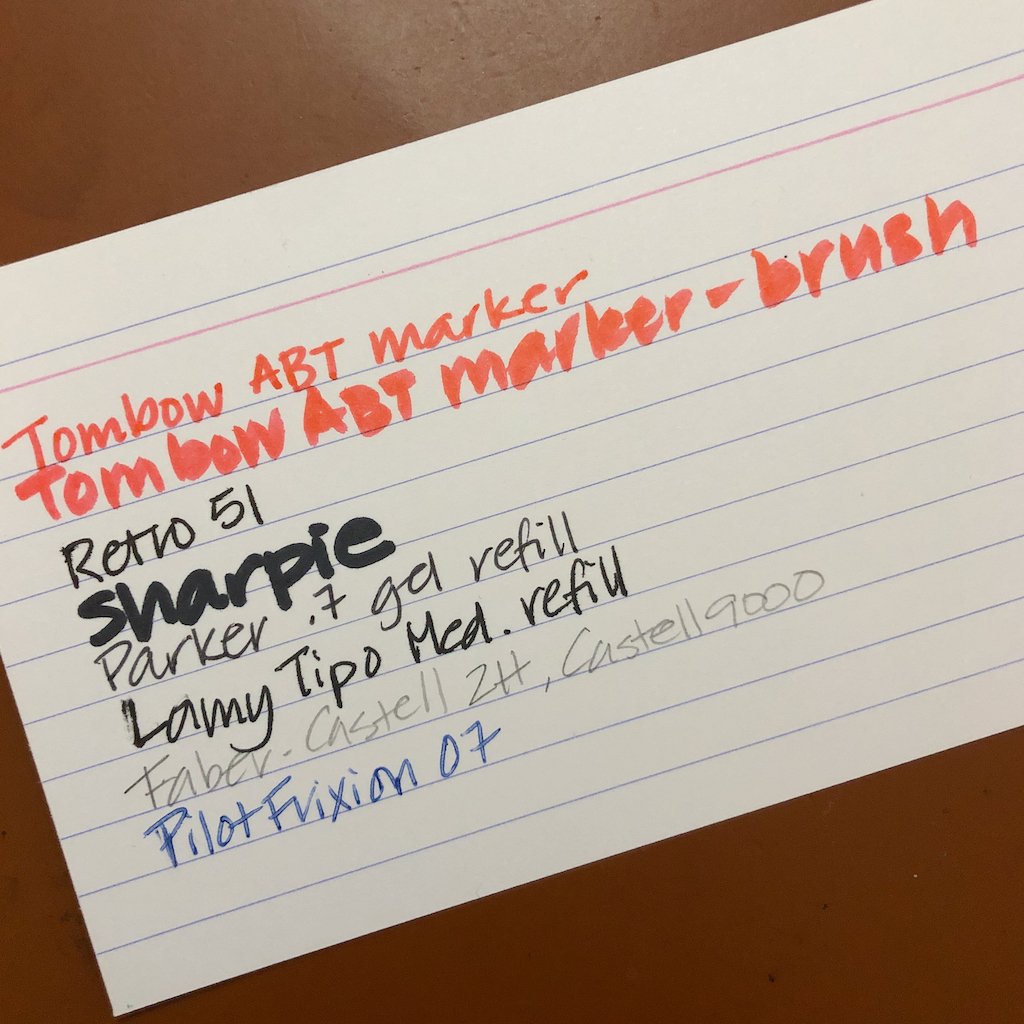
I'm not known for my non-FPs so here are the few I have at hand - hopefully you get the idea that these will pretty much work with any writing instrument.
Again, there are no pictures of the back of the white cards because there were no issues here, not with the Scribo wet ink and broad nib combo or with the non-FP. And shimmer inks weren't a problem with the cards either.
One of the few drawbacks of these cards is that they don't necessarily show off the ink colors as well as other papers like Tomoe River or Cosmo Air Light, especially inks like chromashader/multishading inks. I didn't have any super sheening inks in my pens this time but I don't think they'll shine to the same degree as with other papers either. You do get some shading though not very much.
In short, these work really well with fountain pens and while you may encounter some ink or pen combination that results in some feathering, you're unlikely to have much trouble with these index cards. The difficulty will come in finding them at a reasonable price. If index cards are your thing and your favorite online vendors stock Rhodia and Clairefontaine, ask them to stock index cards too. Until the Bossman decides to keep making Nock cards, these are a great alternative for the index card users out there.
(Disclaimer: I did not purchase any of these index cards. The white cards were given to me by my friend who joined my Cult Pens order and the color cards were given to me by another friend earlier this year. I was not compensated by anyone or any company for inclusion of their products or links in this article.)
The Five Best Tools for Outlining Your Next Novel
(Sarah Read is an author, editor, yarn artist, and pen/paper/ink addict. You can find more about her at her website and on Twitter. And check out her latest book, Out of Water, now available where books are sold!)
Not every writer outlines, but many do--especially if there's a deadline involved. Outlining is very much a discovery process and employs just as much creativity as the writing itself. Sometimes the brainstorms involved can be messy. So what's the best way to keep those ideas roped into a useable order? Some proper stationery tools can help. Everyone's process is a bit different, so ymmv.
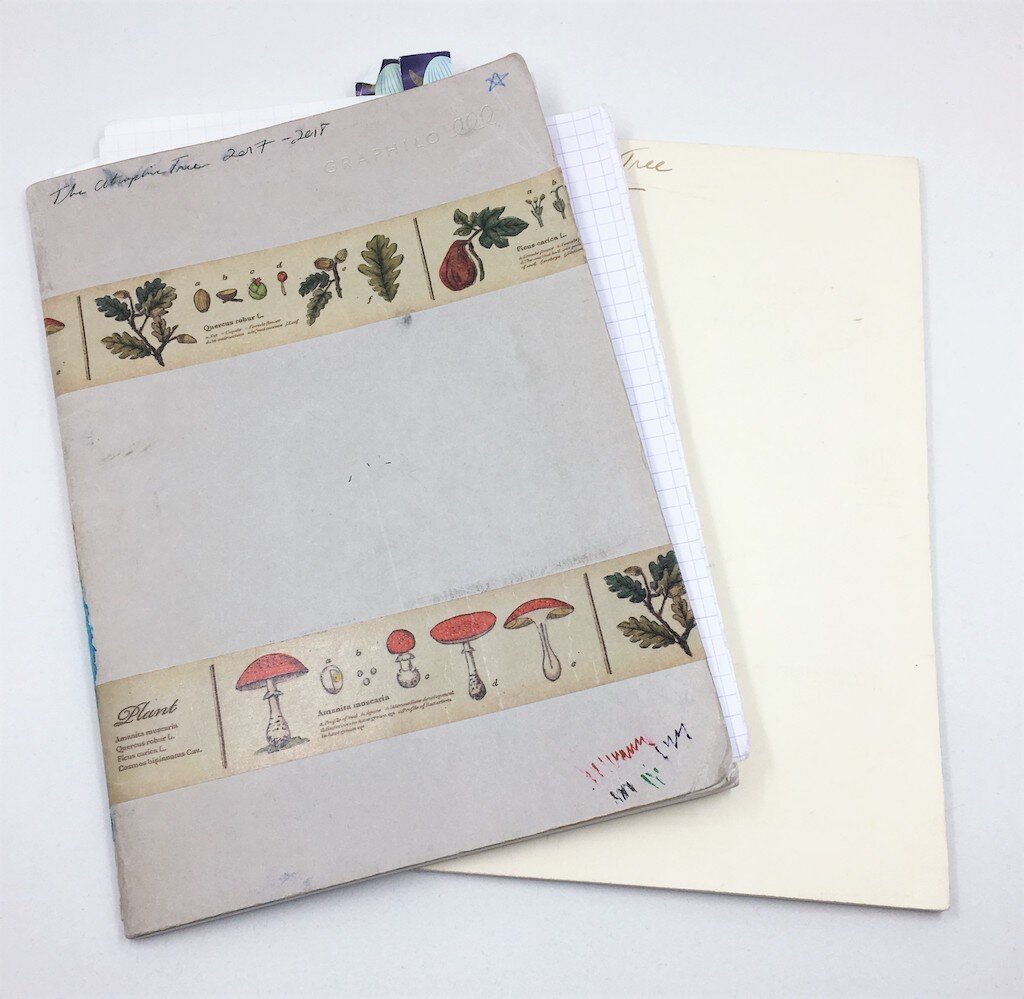
A good notebook. For my outlining, I usually use a slim book that becomes my planning, research, outlining, and editing guide for the whole project. That's a tall order, so it must be durable. It needs to last for years! My current one has been in use for two years and five months. Grid rule is ideal, if not essential. It allows you to easily level your indents for different sub headers. I prefer fountain pen friendly books, even though not every page will have fountain pen ink. My favorites so far have been the Graphilo and the Midori MD. Both have just enough pages for their purpose, while still being easily portable. I can slip the notebook in behind the back cover of the journal I'm writing the book in and carry them as a set.

A set of color-coding pens. It's very handy, when outlining, to be able to color code your notes. Whether it's by setting, character, timeline--all of these in conjunction... You may need only a few colors or a LOT of them, depending on the scope of your project. I would suggest a basic set of black, blue, red, and green at the very minimum. You can find those colors within many brands. But if you're penning an epic legend that spans generations of warring houses, you're probably going to need a set with more variety. I prefer gel pens, as it's easier to find large and varied sets with that ink type. My favorite ones to use are the Pilot Maica because of their bright colors, excellent flow, and fine tips that allow me to add notes to margins easily without cluttering the pages too much. Pilot Juice, Uni-Ball Signo, and Zebra Sarasa Clip are also excellent choices. You could use an array of fountain pens all inked with different colors of ink, also, but I found that the difference in line width between pens added some confusion to my notes. For example, pens that wrote more boldly seemed to be emphasized in the text when that information didn't necessarily need to be emphasized. Consistency of line width can be an important factor in keeping outlines tidy. Which brings me to my next point.

A bold pen for headers. When you're scanning your outline for important information, it can be very handy to have important key words and headers written boldly, so they're easy to find at a glance. Character names, places, themes, or scene headers might be good candidates for this. I use either a thick-tipped fineliner in black, like the Sakura Pigma Micron, or a fountain pen with a stub nib to add a bold emphasis to those notes. Either works, but try to stick to the same tool and color throughout, for ease of scanning.

Notecards. Writers love to follow outlines, but characters rarely do. Sometimes seeing the structure of your book on paper isn't enough. Sometimes whole scenes need to move or the plot structure needs to be adjusted. To do that, I recommend making a brief additional outline on notecards (sticky notes work, too) and spreading them out where you can rearrange and shuffle them as needed. Any scrap of paper will work, but my favorite tool for the job are the Nock DotDash note cards. They're fountain pen friendly and have a grid pattern on them, so they work great for mini scene outlines.

Highlighters. Even with color coding and bolding, you're likely going to need another level of emphasis. Maybe to highlight (literally) plot twists or foreshadowing, themes or critical character development. Highlighters are the classic best tool for the job. I don't care much for the typical marker-style chisel-tip highlighters. They do work, but too often I dislike the way they bleed through paper or smear ink. Neon colored pencils are good, but aren't as quick, since it takes some scribbling to cover an area, instead of one swoop. My favorite tool for the job are the Staedtler Textsurfer Gel highlighters, which are basically super-soft gel crayons. You can highlight in a smooth swoop, and the soft wax doesn't bleed through paper or smear ink. One downside, though, as the wax makes it impossible to write over that area again at all.
And of course, the non-stationery ingredient to this list is flexibility. Outlines are the best example of the "guidelines not rules" adage. You're in charge of your story and you can change your mind anytime. Make your story work for you. And if your outline isn't fitting, change the outline! I have three outlines for my current novel, where the story trajectory changed and I needed to re-route things. Maybe add some scissors and scotch tape to this list, too. And a glass of wine.
Tell me your favorite tools for planning your writing projects! Everyone's method is a little different, and I find them all fascinating.
(JetPens provided these products at no charge to The Pen Addict for review purposes.)
ackermanwheas2002.blogspot.com
Source: http://www.penaddict.com/?category=Index+Card
0 Response to "Pen That is Easy to Write With for Note Cards"
Postar um comentário